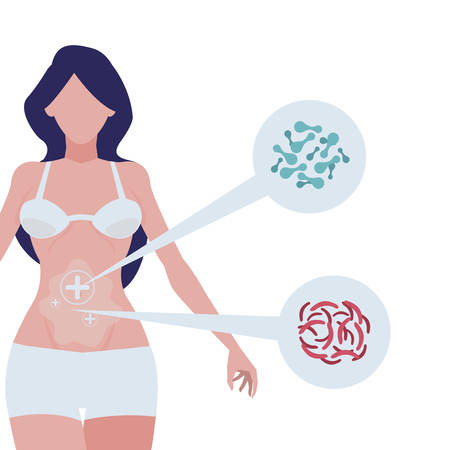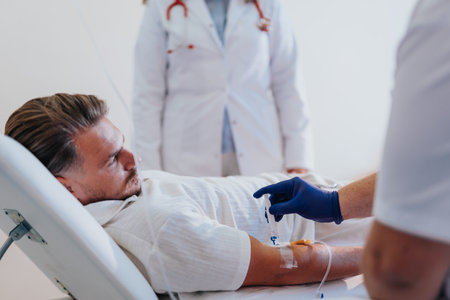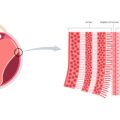Introduction to Cellulite and Body Contouring
Cellulite is a common concern for many across the UK, affecting both men and women but most prevalent among adult women. It appears as dimpled or lumpy skin, often on the thighs, buttocks, and abdomen, and is caused by fat deposits pushing through connective tissue beneath the skin. While genetics play a significant role in its development, other contributing factors include hormonal changes, diet, lifestyle, and even stress levels—issues familiar to many Brits navigating busy urban environments or juggling work-life balance. In recent years, there has been growing interest in non-surgical body contouring treatments as alternatives to traditional surgical procedures. These minimally invasive options appeal particularly to those seeking subtle improvements without the risks or downtime associated with surgery. With advances in technology and a greater focus on wellness and aesthetics within UK culture, non-surgical body contouring has rapidly gained popularity. Understanding why cellulite develops and how contemporary treatments can help is essential for anyone considering their options for smoother, more confident skin.
2. Popular Non-surgical Body Contouring Options Available in the UK
In recent years, non-surgical body contouring has become increasingly popular across the UK, particularly for those seeking effective cellulite reduction without the downtime and risks associated with invasive procedures. British clinics now offer a wide range of advanced treatments, each designed to target stubborn areas and enhance skin smoothness. Below is an overview of the leading non-surgical body contouring options currently available in the UK, highlighting their mechanisms and prevalence:
| Treatment Type | How It Works | Common in UK Clinics? |
|---|---|---|
| Cryolipolysis (Fat Freezing) | This technique utilises controlled cooling to freeze and destroy fat cells beneath the skin, which are then naturally eliminated by the body. It is particularly popular for targeting pockets of fat that are resistant to diet and exercise. | Widely available; offered by most major aesthetic clinics across London, Manchester, Birmingham, and other cities. |
| Radiofrequency (RF) | RF devices heat the deeper layers of skin to stimulate collagen production and tighten tissue. This not only helps reduce cellulite but also improves overall skin texture and firmness. | Highly prevalent; often combined with other modalities for enhanced results in British practices. |
| Ultrasound Therapy | Focused ultrasound waves break down fat cells, which are then processed by the body’s lymphatic system. This method is valued for its precision and ability to treat specific trouble spots. | Increasingly common; many UK clinics have adopted this as a non-invasive alternative to traditional liposuction. |
| Laser-Based Procedures | Laser energy penetrates the skin to disrupt fat cells while simultaneously stimulating collagen synthesis, resulting in smoother contours and reduced appearance of cellulite. | Available at specialised cosmetic centres throughout the UK; often chosen for its dual-action benefits. |
Each of these non-surgical body contouring treatments offers unique benefits for cellulite reduction. Their widespread availability in British clinics reflects a growing demand for minimally invasive solutions that fit seamlessly into busy lifestyles. When considering your options, it’s essential to consult with a qualified practitioner who can recommend the best treatment based on your individual needs and goals.

3. How Each Technology Addresses Cellulite
When it comes to non-surgical body contouring for cellulite reduction, understanding the mechanisms behind each technology is crucial in determining which option best meets your expectations. The most popular modalities available to Brits include radiofrequency (RF), cryolipolysis (fat freezing), laser-based treatments, and ultrasound therapy. Each targets cellulite through distinct biological processes, with varying degrees of clinical support.
Radiofrequency (RF) Treatments
RF devices, such as those commonly found in UK clinics, work by delivering controlled heat deep into the skin layers. This thermal energy stimulates collagen production, encourages tissue remodelling, and may temporarily tighten the skin. For cellulite specifically, RF helps to break down fibrous septae—the connective bands responsible for the dimpled appearance—while improving local blood flow. Recent UK-based clinical trials have demonstrated measurable improvements in skin texture and a visible reduction in cellulite severity after a series of sessions.
Cryolipolysis (Fat Freezing)
Widely recognised under brand names like CoolSculpting, cryolipolysis uses targeted cooling to freeze fat cells beneath the skin’s surface. While this method is highly effective for reducing localised fat bulges, its impact on cellulite is more modest. Fat freezing does not directly address the fibrous bands or dermal laxity that contribute to cellulite. Nevertheless, some British patients report smoother contours as a secondary effect following fat layer reduction, but robust clinical evidence for significant cellulite improvement remains limited.
Laser-Based Devices
Laser therapies—such as 1064 nm Nd:YAG lasers—penetrate the skin to break up the tough septae bands and stimulate new collagen formation. These devices are specifically designed for cellulite and offer targeted treatment zones, making them a popular choice among UK practitioners for stubborn dimpling. Several peer-reviewed studies from British dermatological journals highlight their effectiveness in producing both immediate and lasting improvements in skin smoothness and firmness after repeated sessions.
Ultrasound Therapy
Ultrasound-based treatments use focused sound waves to disrupt underlying fat cells and encourage collagen synthesis. While primarily used for body contouring rather than direct cellulite treatment, some devices have shown promise in reducing the appearance of mild to moderate cellulite when combined with other modalities. The British Association of Dermatologists notes that outcomes tend to be subtle and require multiple treatments for appreciable results.
Comparative Effectiveness: What Does the Evidence Say?
For Brits seeking a solution tailored to cellulite reduction, the current consensus among UK clinicians is that radiofrequency and laser-based therapies offer the most consistent results supported by clinical evidence. Fat freezing may complement these options when excess fat coexists with cellulite but should not be relied upon as a standalone remedy for dimpling. Ultrasound remains a supplementary choice, often incorporated into combination protocols to enhance overall skin tone.
Ultimately, selecting the right technology depends on individual goals, budget considerations, and professional assessment by an experienced practitioner familiar with each modality’s strengths within the context of British patient needs.
4. Safety, Side Effects & Downtime: The British Perspective
When considering non-surgical body contouring for cellulite reduction, safety and recovery are paramount—especially for British patients who value both efficacy and regulatory compliance. Here, we examine typical side effects, expected downtime, and the unique safety standards enforced in the UK to help you make an informed choice.
Common Side Effects Across Popular Treatments
| Treatment | Typical Side Effects | Severity |
|---|---|---|
| Cryolipolysis (Fat Freezing) | Redness, numbness, swelling, slight bruising | Mild to moderate, generally temporary |
| Radiofrequency (RF) | Warmth, mild swelling, tingling sensation | Mild and short-lived |
| Ultrasound Therapy | Soreness, redness, mild discomfort | Mild, usually resolves within hours |
| Laser-Based Treatments | Slight redness, sensitivity, minor swelling | Mild and temporary |
| Acoustic Wave Therapy (AWT) | Mild bruising, tingling, temporary tenderness | Mild to moderate depending on sensitivity |
Recovery Expectations: What Brits Should Anticipate
Most non-surgical treatments for cellulite reduction are designed with minimal downtime in mind. You can typically return to work or routine activities immediately after the procedure. Mild swelling or redness may persist for a few hours to a couple of days, but these effects rarely interfere with daily life. For those with sensitive skin—a common concern among Britons—clinics often offer tailored aftercare recommendations to further minimise discomfort.
Patient Safety Regulations in the UK
The UK maintains rigorous standards for aesthetic procedures. Clinics offering non-surgical body contouring must comply with the Care Quality Commission (CQC) regulations and practitioners should be registered with professional bodies such as the British College of Aesthetic Medicine (BCAM). This ensures that all devices used are CE-marked and that practitioners adhere to high safety and hygiene standards specific to British medical practice.
UK-Specific Advice for Patients:
- Verify Registration: Ensure your clinic is CQC-registered and your practitioner is appropriately qualified.
- Request a Patch Test: Especially if you have sensitive or fair skin, ask for a patch test before full treatment.
- Aftercare Support: Choose clinics that provide detailed post-treatment guidance tailored for the British climate and skin types.
- Know Your Rights: Under UK law, you have the right to clear information about potential risks and an opportunity to discuss any concerns prior to consent.
The combination of robust regulation and transparent communication means that Brits seeking non-surgical cellulite reduction can do so with confidence—knowing their safety is prioritised at every stage.
5. Cost Considerations and Accessibility in the UK
When it comes to non-surgical body contouring for cellulite reduction, cost and accessibility are crucial factors for British consumers. Treatments such as radiofrequency, ultrasound therapy, and cryolipolysis can vary significantly in price depending on the clinic’s location, the practitioner’s expertise, and the specific technology used. On average, a single session may range from £100 to £400, with most individuals requiring multiple sessions for optimal results. Urban centres like London and Manchester typically offer a wider selection of providers and more advanced technologies, but prices may be higher due to increased demand and overhead costs.
Breaking Down Average Costs
For those considering these procedures, it’s important to budget for a full course of treatment rather than just a single session. For example, a complete series of radiofrequency treatments might total between £800 and £2,000. Ultrasound-based options can be similarly priced, while cryolipolysis may command a premium for larger treatment areas or branded devices.
Potential NHS Coverage
It is essential to note that non-surgical body contouring procedures are generally classified as cosmetic treatments by the NHS. As such, they are not covered except in exceptional medical circumstances—something rarely applicable to cellulite reduction. This means all costs are self-funded.
Availability Across Urban and Rural Britain
Access to these services also differs dramatically across the country. In metropolitan areas, patients benefit from a competitive marketplace with state-of-the-art clinics and flexible appointment times. Conversely, rural regions may have limited access, sometimes requiring travel to larger towns or cities for reputable providers. While some mobile practitioners offer home visits in remote locations, standards can vary—so always check credentials and reviews before proceeding.
In summary, while non-surgical body contouring options are increasingly available across the UK, Brits should carefully consider both financial implications and regional access when planning their cellulite reduction journey.
6. Choosing the Right Treatment: Practical Tips for UK Patients
When considering non-surgical body contouring for cellulite reduction, British patients should take a thoughtful and informed approach to ensure optimal results. The UK market offers various advanced treatments, but each individual’s needs, skin type, and lifestyle must guide the final decision. Here are some practical tips tailored specifically for those living in Britain.
Assess Your Personal Goals and Suitability
Begin by identifying your main concerns—whether it’s dimpled skin on the thighs, buttocks, or another area. Consider your overall health, medical history, and any previous cosmetic procedures. Not all treatments are suitable for everyone; factors like skin tone, sensitivity, and underlying conditions can affect both eligibility and results. Consulting with a qualified practitioner is essential to receive personalised advice based on the latest evidence and best practices in the UK.
Choose Reputable Clinics and Certified Providers
The popularity of body contouring has led to a rise in providers across the UK, but quality can vary. Prioritise clinics that are registered with regulatory bodies such as the Care Quality Commission (CQC) or the British Association of Cosmetic Nurses (BACN). Ensure practitioners have proper certifications and experience with your chosen procedure. Reading reviews from other UK patients and seeking recommendations from GPs or friends can further help you select a trustworthy provider.
Understand Realistic Expectations
Non-surgical body contouring methods can achieve significant improvement in the appearance of cellulite, but they rarely offer complete elimination. Discuss likely outcomes during your consultation and ask to see before-and-after photographs of previous clients. It’s important to understand how many sessions might be needed and whether maintenance treatments will be necessary to sustain results over time.
Factor In Cost and Convenience
Treatments vary in price depending on technology used, location, and clinic reputation. While London clinics may charge more than those in smaller towns, travelling long distances isn’t always practical. Ask about package deals or payment plans if needed, but be wary of offers that seem too good to be true—quality care should always come first.
Consider Recovery Time and Lifestyle Impact
Most non-surgical options require little downtime, making them suitable for busy British lifestyles. However, minor swelling or redness is common after some procedures. Check whether you’ll need to avoid certain activities temporarily and plan appointments around your work or social commitments.
Stay Informed About UK Regulations
The aesthetics industry is well-regulated in the UK compared to many countries, but staying up-to-date on guidelines ensures safety and peace of mind. Only use approved technologies and avoid treatments offered outside clinical settings or at “pop-up” locations.
By following these practical steps, Brits can confidently navigate their options for non-surgical cellulite reduction, ensuring safe choices that deliver genuine improvements tailored to their unique goals.
7. Conclusion: Key Takeaways on Non-surgical Cellulite Reduction
After reviewing the leading non-surgical body contouring options for cellulite reduction available to Brits, it is clear that there is no one-size-fits-all solution. Each treatment—whether radiofrequency, ultrasound, laser therapy, or cryolipolysis—offers unique benefits and considerations. When deciding on the most suitable approach, it’s essential to assess your personal goals, medical history, and lifestyle commitments. Consulting with a qualified practitioner who understands UK regulations and standards will help ensure safety and efficacy.
Remember, while these procedures can noticeably improve skin texture and reduce the appearance of cellulite, realistic expectations are crucial. Most treatments require multiple sessions and maintenance appointments for optimal results. Additionally, combining professional treatments with a balanced diet, regular exercise, and proper hydration remains key to sustaining improvements.
For those in the UK considering non-surgical body contouring solutions, thorough research and open communication with reputable clinics are paramount. Always verify credentials and choose practitioners registered with recognised bodies such as the Care Quality Commission (CQC). Ultimately, informed decisions lead to safer experiences and more satisfying outcomes on your journey towards smoother, firmer skin.


